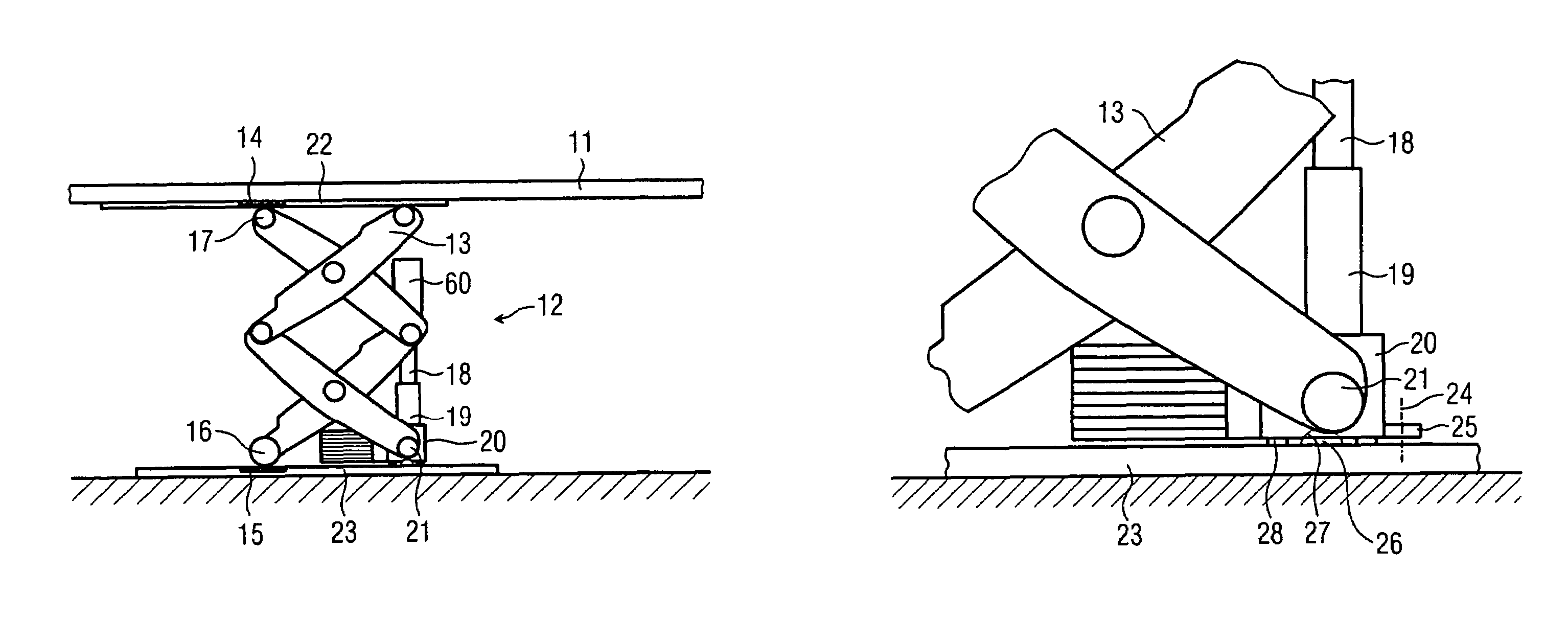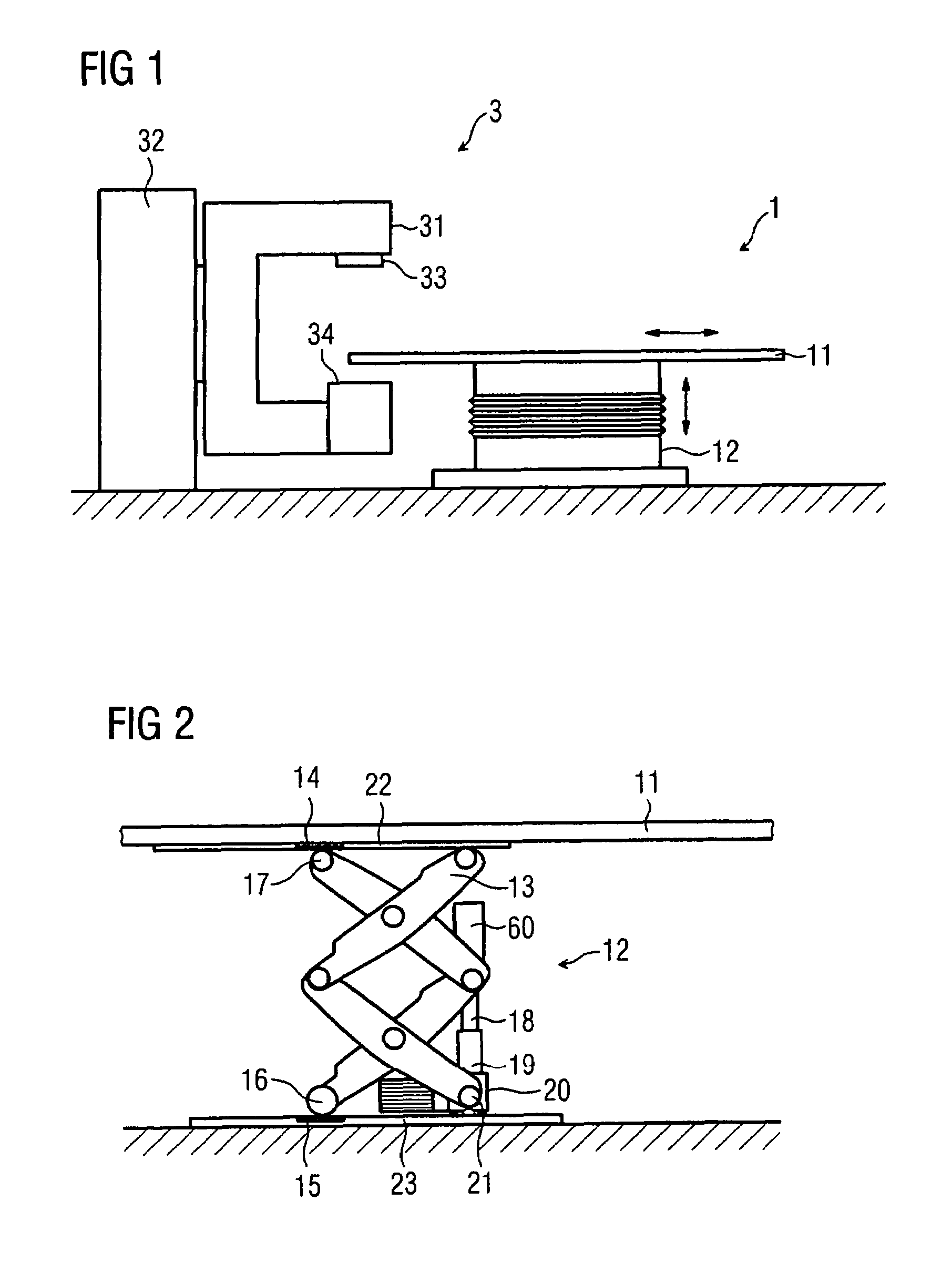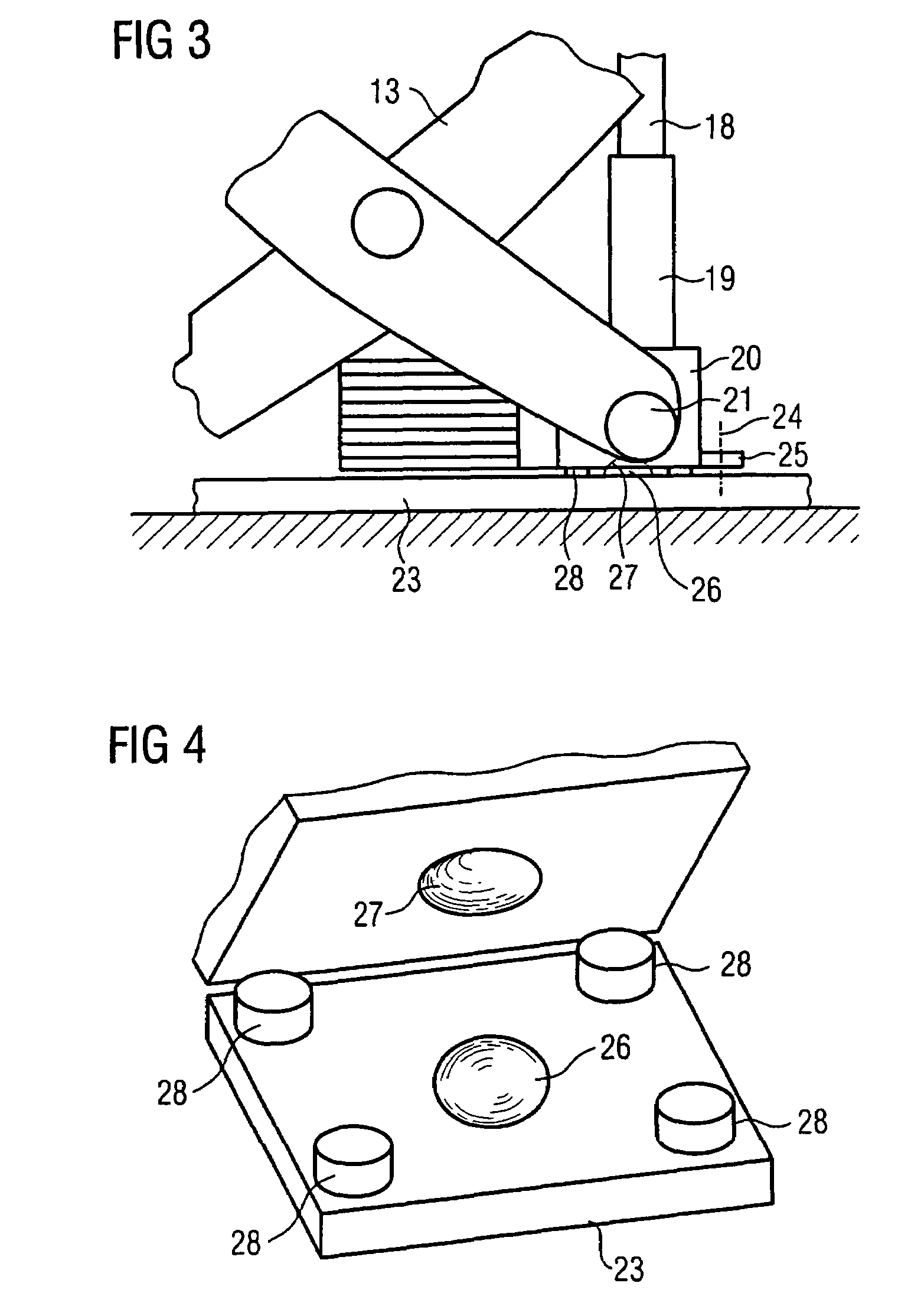Lifting unit
a technology of lifting unit and supporting foot, which is applied in the direction of patient positioning for diagnostics, instruments, applications, etc., can solve the problems of not being able to produce every desired spatial configuration of patient and device, affecting the torque on the supporting foot, and unable to position this massive mechanical structure in three dimensions, so as to prevent the exertion of torque, reduce wear and friction in the spindle drive, and be free from design complication
- Summary
- Abstract
- Description
- Claims
- Application Information
AI Technical Summary
Benefits of technology
Problems solved by technology
Method used
Image
Examples
Embodiment Construction
[0029]In one embodiment, as shown in FIG. 1, a diagnostic and / or therapeutic device (DT device) 3 includes a patient support apparatus 1 and a C-arc 31 that carries an X-ray emitter 33 and an X-ray detector 34. For example, the C-arc can be used to generate X-ray images having X-radiation with low energies or therapeutic irradiation having X-radiation with high energies. The C-arc 31 is supported by a C-arc pedestal 32. The C-arc pedestal 32, as shown in FIG. 1, is a structure that is supported by the floor of a room. In alternate embodiments, the C-arc pedestal 32 is supported by the wall or ceiling of the room. The C-arc 31, which positions the X-ray emitter 33 and the X-ray detector 34, and the patient support apparatus 1 are positioned so that a patient is detected by the X-ray beam. In one exemplary embodiment, the C-arc 31 is rotated about at least one horizontal axis (not illustrated) and is moved (not illustrated) vertically in the C-arc pedestal 32.
[0030]The patient support...
PUM
 Login to View More
Login to View More Abstract
Description
Claims
Application Information
 Login to View More
Login to View More - R&D
- Intellectual Property
- Life Sciences
- Materials
- Tech Scout
- Unparalleled Data Quality
- Higher Quality Content
- 60% Fewer Hallucinations
Browse by: Latest US Patents, China's latest patents, Technical Efficacy Thesaurus, Application Domain, Technology Topic, Popular Technical Reports.
© 2025 PatSnap. All rights reserved.Legal|Privacy policy|Modern Slavery Act Transparency Statement|Sitemap|About US| Contact US: help@patsnap.com



